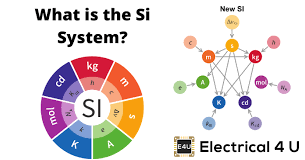Electric field flux
What is electric field flux?
The flow of electric field or electric flux is simply proportional to the number scalar quantity of electric field lines that cross a surface. It is denoted by the capital Greek letter Φ (phi).
The electric field does not actually “flow” in the way that a stream of water does, although the streamlines of the fluid resemble those of the electric field.

In the figure above a flat surface crossed by an electric field shown E . When the unit vector normal to the surface n and the field E are parallel, the number of field lines through the surface is maximum. But as the angle θ between n and E increases , the number of lines that pass through the green surface is less.
On the other hand, the electric field flux also depends on the magnitude of E , since the larger this is, the more field lines cross the surface. And of course, the greater the area S of said surface, the greater the flow, so the following equation is established:
Φ = E ∙ Scosθ
This expression is consistent with the scalar product between the vectors E and n :
Φ = ( E • n ) S
The unit for electric field flux in the SI International System of Units is Nm 2 / C (newton x square meter / coulomb). Alternatively, since the field is also measured in V / m (volt over meter), the electric flux remains in (V ∙ m).
Examples
According to the definition, the electric flux can be positive, negative or equal to 0. The electric field flux is:
-Positive when the angle θ between E and n is less than 90º, since cos θ is greater than zero.
-Negative if said angle is greater than 90º, because then cos θ is less than zero.
-Null when θ is exactly 90º, because cos 90º = 0 and the field lines in this case are tangential to the surface.
-On the other hand, if the angle between E and n is equal to 0, the flow acquires its maximum value.
These possibilities are shown in the following image:

Electric field flux on an arbitrary surface
Previously, the electric field flux was determined in the particular case of a uniform field incident on a flat surface. For a surface of arbitrary shape S and / or a non-uniform electric field, the angle between E and n can vary from point to point.
In the figure below there are two examples, on the left a curved surface and on the right a closed surface.

In both cases, the surface is divided into much smaller regions, of infinitesimal size, called dS, through which a flow also infinitesimal dΦ passes through:
dΦ = ( E • n ) dS = (Ecosθ) dS
The total field is obtained by adding all these infinitesimal contributions:

In the case of closed surfaces, n always points outwards, therefore the flow has a sign + when it is outgoing to S, since the angle between E and n is less than 90º, and a sign – when the field is incoming, because then the angle between E and n is greater than 90º (see figure 2).
Note that in the closed surface on the right, the number of field lines entering the surface is equal to the number of lines leaving. Therefore the net flow, defined as the algebraic sum of the incoming flow and the outgoing flow, is zero.
The source of the electric field in this case is outside the surface, however, the net flux would be different from 0 if the source of the electric field (the charge distribution) was inside the surface.
Training
Exercise 1
There is an electric field E = 3.5 kN / C x and a flat rectangular surface 0.35 m wide by 0.7 m long. Find the electric field flux through the rectangle in the following cases:
a) The surface is parallel to the yz plane.
b) The rectangle is parallel to the xy plane.
c) The normal of the plane forms an angle of 40º with the x-axis and contains the y-axis.

Solution to
The normal vector and the electric field vector are parallel, therefore the angle θ between them is 0º and the electric flux is:
Φ = (E ∙ S) cos 0 = E ∙ S
The area S of the rectangle is:
S = 0.35 mx 0.7 m = 0.245 m 2
Substituting in Φ:
Φ = E ∙ S = 3.5 x 10 3 N / C × 0.245 m 2 = 857.5 N ∙ m 2 / C.
Solution b
The electric field flux is 0, since the vectors E and n are perpendicular to each other.
Solution c
The angle θ between the field E and the normal vector n is 40º (see figure), therefore:
Φ = E ∙ S ∙ cos θ = 3.5 x 10 3 N / C × 0.245 m 2 × cos 40º = 656.9 N ∙ m 2 / C.
Exercise 2
Calculate the electric field flux that produces a positive point charge q o = 2μC located in the center of a sphere of radius R = 5 cm.
Solution
The field produced by the charge q o is not uniform, but from Coulomb’s law it is known that on the surface of the sphere, it has a magnitude of:

The field has a radial direction, and the normal vector n, therefore the angle between both vectors is 0 at every point on the spherical surface. Substituting in:

It has to:

The integral of dS over the entire spherical surface S is its area, which is 4πR 2, therefore:

Its value is:
Φ = 4π × 9 × 10 9 x 2 × 10 -6 N⋅m 2 / C = 2.3 x 10 5 N⋅m 2 / C
